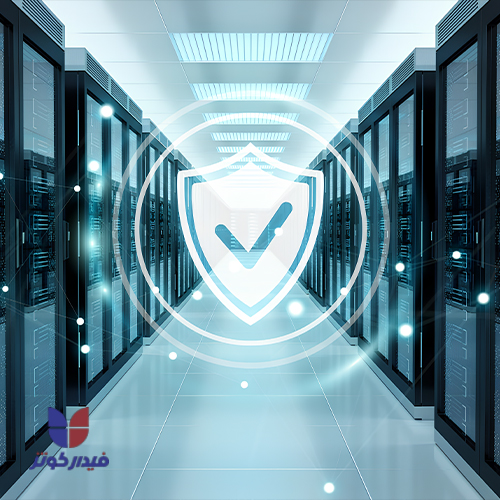In today's digital world, data center security has become extremely important. Every organization, from large corporations to small businesses, depends on secure data centers to protect their sensitive data and customer information.
Security breaches can have irreparable consequences for businesses, including loss of sensitive information, financial losses, and loss of customer trust. In fact, any breach in the security of datacenters can lead to the complete stoppage of an organization's operations. Therefore, understanding the importance and implementing effective solutions for data center security is a vital matter that should be taken seriously by every business.
This article examines 24 effective solutions in 2024 to ensure the security of data centers.
First part: Why is data center security important?
Data centers are repositories of critical information that organizations depend on for their daily operations. This information includes sensitive customer data, financial information, trade secrets and even strategic plans of companies. Violation of the security of this information can have dire consequences. Maintaining the security of this information plays an essential role in the survival and progress of any organization.
What types of data are stored in datacenters?
- Financial information: including bank records, financial transactions, accounting information and other sensitive financial data
- Customer records: including contact information, purchase history, order details and other personal information of customers
- Intellectual property: including formulas, designs, source codes, confidential documents and other intellectual property
- Operational data: includes data related to supply chain, manufacturing, marketing, human resources and other key business processes.
Adverse consequences of data center security breaches
A lack of security in the data center can have disastrous consequences for organizations, including:
- Data theft: Hackers can gain access to confidential information such as financial and personal information of customers and use it for illegal abuses such as identity theft or financial fraud.
- Data loss: Natural disasters, system failures, or human errors can lead to permanent data loss that can significantly harm an organization's operations.
- Business disruption: Cyber attacks and power outages can cause systems and services to fail and temporarily or permanently disrupt an organization's activities.
- Damage to reputation: A data center security breach can damage the trust of customers and partners and tarnish an organization's reputation.
- Legal penalties: In many countries, there are strict laws to protect personal data. Violation of these rules can lead to heavy financial penalties.
Protecting sensitive and confidential information in data centers means maintaining the trust of customers and guaranteeing the credibility of the organization. Lost trust is hard to regain and companies should make every effort to maintain it. In addition, the security of data centers also guarantees business continuity. Any disruption in the security of data centers can lead to the interruption of business operations and, as a result, significant financial losses.
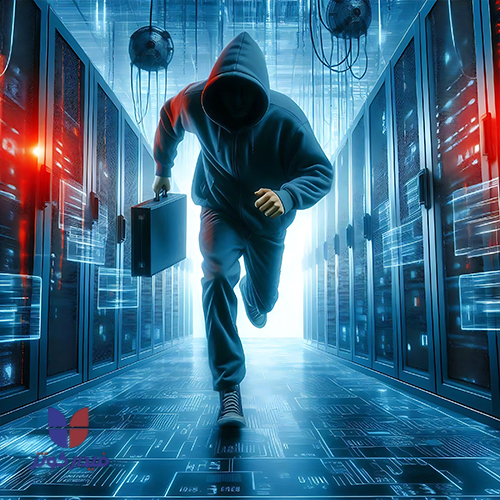
Second part: security threats facing data centers
1. Complex and evolving cyber threats
Hackers, like the master thieves of the digital world, are constantly looking for ways to break into data centers and steal information. They use various methods such as phishing attacks, malware and exploits to penetrate the systems. Hackers can gain access to sensitive financial, medical, or government information and use it for extortion, espionage, or selling it on the black market. Weak data center cybersecurity can make it much easier for hackers to penetrate.
2. Malware
Malware, the invisible soldiers of the digital world, are malicious programs that can sneak into systems and cause damage. There are different types of malware such as viruses, worms, Trojans, and ransomware, each of which has its own function. Malware can steal data, crash systems, or even paralyze an entire network.
3. Human errors and negligence
Even the best security systems are vulnerable to human error. Inadvertent mistakes by users, such as choosing weak passwords or clicking on suspicious links, can give hackers the opportunity to break into systems. Educating and informing users about security risks can help reduce these errors and increase the security of data centers.
4. Security weaknesses in infrastructure and software
Data center software and operating systems may have security holes that hackers can use to infiltrate the system. Not updating software and operating systems and not using proper firewall and antivirus can put the data center at risk.
5. Natural disasters and unforeseen events
Natural disasters such as floods, earthquakes and fires, as well as unexpected events such as power outages, can damage data centers and destroy information. Having a comprehensive plan in place to deal with these incidents, such as backing up data and using emergency power generators, can help keep data centers safe from these risks.
6. Social engineering, deception
Social engineering is a clever way to trick users into revealing sensitive information or taking unsafe actions. Hackers use various tricks like impersonation, phishing emails and phone calls to trick users. By deceiving users, hackers can gain access to the information they want and penetrate the systems.
The third part: 24 effective solutions to improve security in the data center
Data center security is one of the most critical aspects of IT management in organizations. Due to the increase in security threats and cyber attacks, it is necessary to adopt effective and up-to-date solutions to protect data and infrastructure. Below are 24 effective and new solutions to increase the security of data centers:
Physical security of the data center
1. Proper positioning
- Choosing a data center location is the first step towards physical security
- Choosing a data center location away from high-risk areas such as airports, industrial facilities, and railway lines
- Investigating geographical and climatic needs such as weather, seismic situation and access to critical infrastructure
2. Building
- Building walls with appropriate thickness and resistant materials (preferably concrete) to protect against external factors and hazards
- Avoiding the placement and use of windows in the data center building
- Using green spaces, statues, stone structures, etc. for landscaping to hide the data center from public view
- Using emergency exit doors that can only be opened from the inside
- Check the absence of seams or hidden access points in the wall, floor, ceiling and all parts of the building
3. Physical access control
- Using smart ID cards and multi-factor authentication systems for people's entry and exit
- Installing biometric systems such as fingerprints and iris scans for more accurate identity verification
- Limiting physical access to authorized persons and recording their entry and exit
- Use of controllable obstacles such as barricades or bollards in the entrance and exit areas
- Preventing the entry of any food, chemical, etc. into the data center area that can cause an accident and compromise the security of the data center.
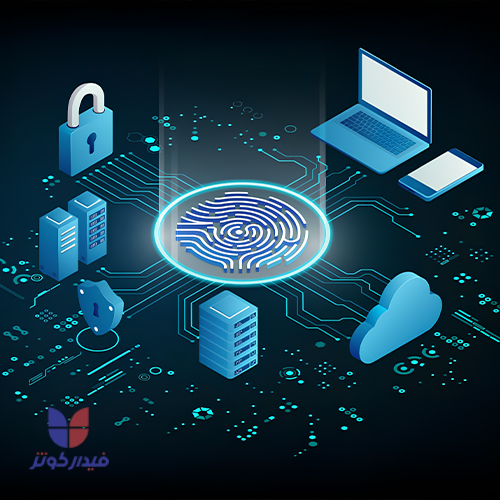
4. Supervision and monitoring
- Installing CCTV cameras with night vision and recording images for constant monitoring of the environment
- Using warning and alarm systems to identify and deal with unauthorized intrusion
- 24-hour monitoring by trained security personnel
5. Protection against natural disasters
- A structure resistant to earthquakes and other natural disasters to maintain the stability of the data center
- Installation of anti-flooding systems to prevent damage to sensitive equipment
- Preparation of comprehensive plans to deal with emergencies and natural disasters
6. Fire alarm systems
Using fire alarm systems and taking appropriate fire extinguishing measures
7. Having alternative main sources
To ensure the security stability of the data center, it is recommended to use several sources of electricity and water supply.
Data center network security
8. Using advanced firewalls
- Using various types of firewalls such as: packet firewalls, stateful firewalls, program firewalls, new generation firewalls (NGFW) and...
- Correct configuration of firewall rules to allow and block traffic
- Regularly update your firewall and software
- Continuous monitoring and troubleshooting of firewall performance
9. Intrusion detection and prevention systems (IDS/IPS)
- Use of intrusion detection systems (IDS) and intrusion prevention systems (IPS)
- Deploying IDS/IPS at appropriate points in the network
- Adjust IDS/IPS sensitivity and thresholds
- Analyze alerts and reports
10. Data encryption
Using encryption protocols:
- SSL/TLS to secure web communications
- IPsec for encrypting VPN traffic
- PGP/GPG for email and file encryption
- AES to encrypt stored data.
- RSA for public key cryptography for secure data exchange
Management of encryption keys:
- Secure storage of cryptographic keys
- Control access to cryptographic keys
- Regular rotation of cryptographic keys
11. Intrusion detection systems (IDS)
- Using different types of intrusion detection systems such as: signature-based, anomaly-based, behavior-based detection
- Identifying and tracking unauthorized activities in the network
- Reporting and warning about suspicious activities
12. Network division
- Separation of sensitive networks from public networks, limiting access to different parts of the network
- Use VLANs to create virtual networks to isolate traffic and increase security
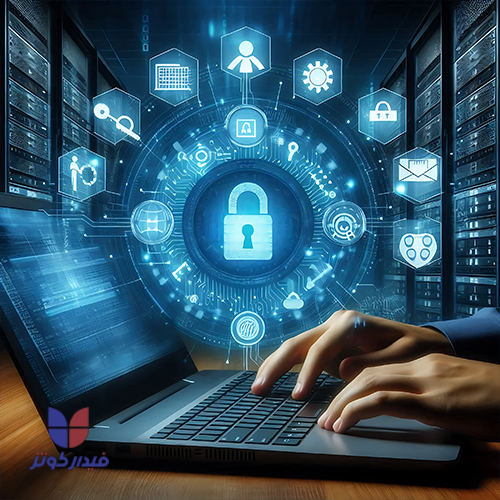
Data center software security
13. Regular updating and patching
- Regular updating of operating systems, software and firmware to fix known vulnerabilities and security holes is necessary to maintain the security of the data center.
- Use a patch management system to automate this process.
- Automating the update process helps reduce the risk of human error and ensures systems are up-to-date at all times.
- Implementing a regular process for reviewing, verifying and installing security patches is essential.
- It is important to prioritize patches based on the level of risk and their impact on data center performance.
- Testing patches in test environments before deployment in operational environments can prevent possible problems.
14. Log and event management systems (SIEM)
15. Identity and access management (IAM)
Training and awareness of employees
16. Staff training
Cyber security training courses:
- Updating the knowledge of employees with the latest threats and methods to deal with them
- Familiarity with protocols and best practices for maintaining data center security
- Raising awareness of the dangers of social engineering and phishing
Internal penetration tests:
- Simulation of cyber attacks by trained staff
- Identifying data center security weaknesses and fixing them
- Increased readiness to deal with real attacks
Use of new technologies
17. Artificial intelligence and machine learning
- Artificial intelligence can quickly analyze large amounts of security data and identify suspicious patterns.
- Artificial intelligence-based systems can identify and block cyber attacks in real time.
- Artificial intelligence can predict future attacks by learning from historical data and prepare to deal with them.
- Artificial intelligence can automatically identify, assess and prioritize security risks.
- Firewalls, intrusion detection and anti-malware systems can use artificial intelligence to improve their efficiency.
- AI can work seamlessly with other existing security tools to create a comprehensive layer of defense.
- The deployment of artificial intelligence can reduce the need for security personnel and at the same time increase efficiency and accuracy to improve data center security.
18. Blockchain
- Blockchain prevents data manipulation and fraud through encryption and distribution of records.
- Blockchain gives users complete control over their data and eliminates the need for centralized intermediaries.
- All transactions on the blockchain are publicly recorded and visible to all.
- Sensitive data can be stored securely on the blockchain.
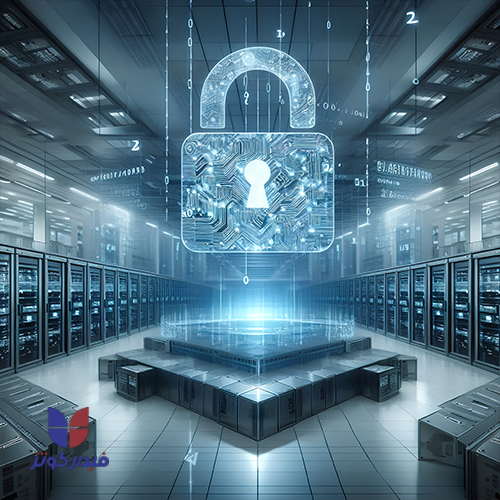
19. Internet of Things (IoT)
- Sensors and devices connected to the Internet can monitor activities in the data center in real-time and issue warnings in case of any problems.
- IoT devices can be used to identify and track unauthorized people and objects in the data center.
20. Cloud space
- Cloud service providers can provide isolated data centers to prevent unauthorized access to data.
- Cloud service centers are obliged to back up data permanently and regularly, and this makes it possible to recover them quickly in case of problems.
- Cloud service providers offer strict access control settings so that only authorized people can access data and systems.
- Cloud service centers regularly update their software and security systems, which means data centers will always have the latest protections to keep the data center secure.
21. Public Key Infrastructure (PKI)
- PKI uses digital certificates to authenticate users and devices and prevent unauthorized access to the data center.
- PKI uses encryption to protect data in transit and storage.
- This system uses digital signature to verify the authenticity and validity of the data.
Management and policy solutions
22. Development of security policies
- Analysis and review of the organization's security needs
- Developing and documenting security policies
- Identify threats and weaknesses
- Training employees on data center security policies and procedures
- Monitoring the implementation and continuous updating of policies
23. Risk assessment
- Identifying and prioritizing security risks
- Allocation of resources to reduce risk
- Make informed decisions about security measures
- Vulnerability analysis
- Estimating the probability and severity of risk occurrence and their ranking
- Developing risk reduction plans and implementing them
- Continuous monitoring and review of the risk assessment process
24. Backup and recovery
Regular backup programs:
- Periodic and regular backups
- Using different backup technologies (local, cloud, hybrid)
- Safe and secure storage of backup copies
- Regularly test and review the effectiveness of backup programs
Disaster Recovery:
- A disaster recovery plan (DRP) is essential to ensure that the data center can be quickly and completely recovered in the event of a major disaster such as a fire, flood, or earthquake.
- Exercise and simulation of recovery scenarios
- Determining roles and responsibilities in the recovery process
- Ensuring availability of necessary resources and equipment
- Use a secondary site to back up data and applications.
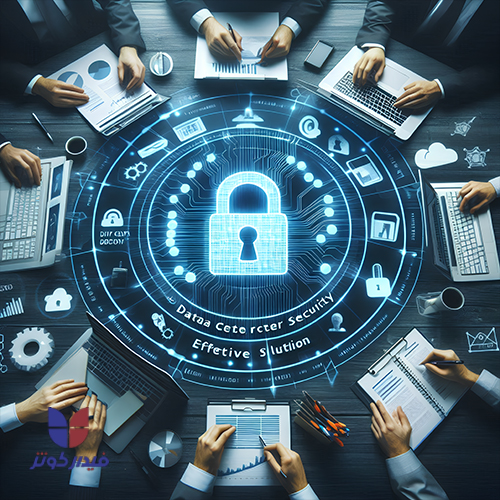
Conclusion
In the end, the security of data centers is one of the most fundamental issues for maintaining sensitive data and information. By reviewing the main points raised, we realized that a combination of physical, network, software and management solutions can help create a secure environment for data centers. Developing and implementing a comprehensive security strategy is the main key in dealing with security threats. Without such a strategy, organizations will face serious risks.
Remember, data center security is an ongoing process, not a final destination. Hackers are always innovating and improving their methods, so you should keep up. By applying the solutions presented in this article and constantly updating your knowledge and equipment, you can build an impenetrable fortress for your data center and continue your activities with peace of mind.
With a team of expert engineers and consultants, Fidar Kowsar Company is ready to accompany you in formulating and implementing the best security strategies. Contact us to benefit from these expert consultations and ensure the security of your data center.
